Sunnudagur, 21. september 2008
NASA mælir minnkandi virkni sólar.
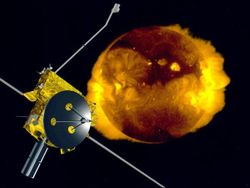 Nú þegar geimfarið Ódysseifur (Ulysses) er að ljúka 17 ára rannsókn á sólinni boðar NASA til fréttamannafundar næstkomandi þriðjudag. Athygli vekur að virkni sólar fer minnkandi. Sólvindur ekki eins lítill í 50 ár. Áhrifanna gæti gætt í sólkerfinu segir NASA.
Nú þegar geimfarið Ódysseifur (Ulysses) er að ljúka 17 ára rannsókn á sólinni boðar NASA til fréttamannafundar næstkomandi þriðjudag. Athygli vekur að virkni sólar fer minnkandi. Sólvindur ekki eins lítill í 50 ár. Áhrifanna gæti gætt í sólkerfinu segir NASA.
Tilkynningin er svohljóðandi (sjá hér):
NASA To Discuss Conditions On And Surrounding The Sun
WASHINGTON -- NASA will hold a media teleconference Tuesday, Sept. 23, at 12:30 p.m. EDT, to discuss data from the joint NASA and European Space Agency Ulysses mission that reveals the sun's solar wind is at a 50-year low. The sun's current state could result in changing conditions in the solar system.
Ulysses was the first mission to survey the space environment above and below the poles of the sun. The reams of data Ulysses returned have changed forever the way scientists view our star and its effects. The venerable spacecraft has lasted more than 17 years - almost four times its expected mission lifetime.
The panelists are:
-- Ed Smith, NASA Ulysses project scientist and magnetic field instrument investigator, Jet Propulsion Laboratory, Pasadena, Calif.
-- Dave McComas, Ulysses solar wind instrument principal investigator, Southwest Research Institute, San Antonio
-- Karine Issautier, Ulysses radio wave lead investigator, Observatoire de Paris, Meudon, France
-- Nancy Crooker, Research Professor, Boston University, Boston, Mass.
Reporters should call 866-617-1526 and use the pass code “sun” to participate in the teleconference. International media should call 1-210-795-0624.
To access visuals that will the accompany presentations, go to:
http://www.nasa.gov/topics/solarsystem/features/ulysses-20080923.html
Audio of the teleconference will be streamed live at:
--- --- ---
Fyrr í sumar var þessi tilkynning þar sem sagt er að virkni næstu sólsveiflu geti orðið minni en undanfarið
International Mission Studying Sun to Conclude
June 12, 2008 PASADENA, Calif. - After more than 17 years of pioneering solar science, a joint NASA and European Space Agency mission to study the sun will end on or about July 1.
The Ulysses spacecraft has endured for almost four times its expected lifespan. However, the spacecraft will cease operations because of a decline in power produced by its onboard generators. Ulysses has forever changed the way scientists view the sun and its effect on the surrounding space. Mission results and the science legacy it leaves behind were reviewed today at a media briefing at European Space Agency Headquarters in Paris.
"The main objective of Ulysses was to study, from every angle, the heliosphere, which is the vast bubble in space carved out by the solar wind," said Ed Smith, Ulysses project scientist at NASA's Jet Propulsion Laboratory, Pasadena, Calif. "Over its long life, Ulysses redefined our knowledge of the heliosphere and went on to answer questions about our solar neighborhood we did not know to ask."
Ulysses ends its career after revealing that the magnetic field emanating from the sun's poles is much weaker than previously observed. This could mean the upcoming solar maximum period will be less intense than in recent history.
"Over almost two decades of science observations by Ulysses, we have learned a lot more than we expected about our star and the way it interacts with the space surrounding it," said Richard Marsden, Ulysses project scientist and mission manager for the European Space Agency (ESA). "Solar missions have appeared in recent years, but Ulysses is still unique today. Its special point of view over the sun's poles never has been covered by any other mission."
The spacecraft and its suite of 10 instruments had to be highly sensitive, yet robust enough to withstand some of the most extreme conditions in the solar system, including intense radiation while passing by the giant planet Jupiter's north pole. The encounter occurred while injecting the mission into its orbit over the sun's poles.
"Ulysses has been a challenging mission since launch," said Ed Massey, Ulysses project manager at JPL. "Its success required the cooperation and intellect of engineers and scientists from around the world."
Ulysses was the first mission to survey the environment in space above and below the poles of the sun in the four dimensions of space and time. It showed the sun's magnetic field is carried into the solar system in a more complicated manner than previously believed. Particles expelled by the sun from low latitudes can climb to high latitudes and vice versa, sometimes unexpectedly finding their way out to the planets. Ulysses also studied dust flowing into our solar system from deep space, and showed it was 30 times more abundant than astronomers suspected. In addition, the spacecraft detected helium atoms from deep space and confirmed the universe does not contain enough matter to eventually halt its expansion.
Ulysses collected and transmitted science data to Earth during its 8.6 billion kilometer journey (5.4 billion miles). As the power supply weakened during the years, engineers devised methods to conserve energy. The power has dwindled to the point where thruster fuel soon will freeze in the spacecraft's pipelines.
"When the last bits of data finally arrive, it surely will be tough to say goodbye," said Nigel Angold, ESA's Ulysses mission operations manager. "But any sadness I might feel will pale in comparison to the pride of working on such a magnificent mission. Although operations will be ending, scientific discoveries from Ulysses data will continue for years to come."
Ulysses was launched aboard space shuttle Discovery on Oct. 6, 1990. From Earth orbit, it was propelled toward Jupiter by solid-fuel rocket motors. Ulysses passed Jupiter on Feb. 8, 1992. The giant planet's gravity then bent the spacecraft's flight path downward and away from the ecliptic plane to place the spacecraft in a final orbit around the sun that would take it past our star's north and south poles.
The spacecraft was provided by ESA. NASA provided the launch vehicle and upper stage boosters. The U.S. Department of Energy supplied a radioisotope thermoelectric generator to provide power to the spacecraft. Science instruments were provided by both U.S. and European investigators. The spacecraft is operated from JPL by a joint NASA/ESA team. More information about the joint NASA/ESA Ulysses mission is available at http://ulysses.jpl.nasa.gov or http://www.esa.int/esaSC/SEMPEQUG3HF_index_0_ov.html
Sólin í dag er sviplaus. Sólblettir hafa varla sést mánuðum saman:
Uppfært 22.sept: Skömmu eftir að pistillinn var skrifaður birtist óvænt nýr sólblettur. Myndin hér fyrir neðan er beintengd og uppfærist sjálfkrafa. Sjá hér.
Uppfært 24. sept: Sólbletturinn hvarf eins og dögg fyrir sólu í gær.
Nú er það spurning. Er þetta forboði þess að hnatthlýnun undanfarinna áratuga kunni að ganga til baka? Spyr sá sem ekki veit ...
Meginflokkur: Vísindi og fræði | Aukaflokkar: Dægurmál, Stjórnmál og samfélag, Tölvur og tækni | Breytt 24.9.2008 kl. 08:33 | Facebook
Um bloggið
Ginnungagap
Ýmislegt
Loftslag
Teljari
Álverð
Sólin í dag:
(Smella á mynd)
.
Olíuverðið í dag:
Nýjustu færslur
- Kínverskur loftbelgur yfir Ameríku, og Amerískur belgur yfir ...
- Vísindavefurinn: Getum við seinkað klukkunni á Íslandi og fen...
- Sjálfstæðisflokkurinn með tæplega 19% meira fylgi en Samfylki...
- Bjarni Sigurðsson harmonikkusnillingur frá Geysi. Fáein orð...
- Hvers vegna valdi Apple ekki Ísland fyrir gagnaver...?
Heimsóknir
Flettingar
- Í dag (21.1.): 0
- Sl. sólarhring: 7
- Sl. viku: 59
- Frá upphafi: 0
Annað
- Innlit í dag: 0
- Innlit sl. viku: 39
- Gestir í dag: 0
- IP-tölur í dag: 0
Uppfært á 3 mín. fresti.
Skýringar
Tenglar
Tenglar
Ýmsar vefsíður
- Efnisyfirlit pistla
- Lofthiti - Sjávarstaða - Hafís - Sólvirkni... Beintengdir ferlar
- Club du Soleil Greinar um samaspil sólar og veðurfars
- Stjörnufræðivefurinn
- Astronomy Picture of the Day
- Climate4you
- Watts Up With That?
- World Climate Report
- CO2 Science
- The Reference Frame
- Climate-Audit
- ICECAP
- The Air Went
- Science Sceptical Blog
- Roy Spencer
- Friends of Sience
- Prometheus
- Öldur aldanna. Sjaldan er ein báran stök - einnig í veðurfari? (2003) Vefsíða ÁHB
- Gróðurhúsaáhrif eða eðlilegar sveiflur í virkni sólar? (Grein í Lesbók Mbl. 20. júní 1998) Höfundur Ágúst H. Bjarnason
- Er jörðin að hitna?-Ekki er allt sem sýnist (1998) Vefsíða ÁHB
Uppskriftir
Ýmsar mataruppskriftir
Myndaalbúm
Bloggvinir
-
 majab
majab
-
 ragu
ragu
-
 amadeus
amadeus
-
 andres08
andres08
-
 apalsson
apalsson
-
 asabjorg
asabjorg
-
 askja
askja
-
 astromix
astromix
-
 baldher
baldher
-
 biggibraga
biggibraga
-
 bjarkib
bjarkib
-
 bjarnijonsson
bjarnijonsson
-
 bjarnimax
bjarnimax
-
 bjorn-geir
bjorn-geir
-
 blindur
blindur
-
 bofs
bofs
-
 brandarar
brandarar
-
 daliaa
daliaa
-
 darwin
darwin
-
 duddi9
duddi9
-
 ea
ea
-
 egillsv
egillsv
-
 einari
einari
-
 einarstrand
einarstrand
-
 elinora
elinora
-
 elvira
elvira
-
 emilhannes
emilhannes
-
 esv
esv
-
 eyjapeyji
eyjapeyji
-
 fhg
fhg
-
 finder
finder
-
 finnur
finnur
-
 fjarki
fjarki
-
 flinston
flinston
-
 frisk
frisk
-
 gattin
gattin
-
 geiragustsson
geiragustsson
-
 gillimann
gillimann
-
 gretaro
gretaro
-
 gthg
gthg
-
 gudmbjo
gudmbjo
-
 gudni-is
gudni-is
-
 gummibraga
gummibraga
-
 gun
gun
-
 gutti
gutti
-
 haddi9001
haddi9001
-
 halldorjonsson
halldorjonsson
-
 halldors
halldors
-
 hlini
hlini
-
 hof
hof
-
 hordurhalldorsson
hordurhalldorsson
-
 hreinsamviska
hreinsamviska
-
 hronnsig
hronnsig
-
 hugdettan
hugdettan
-
 icekeiko
icekeiko
-
 ingibjorgelsa
ingibjorgelsa
-
 jakobbjornsson
jakobbjornsson
-
 jakobk
jakobk
-
 johannesthor
johannesthor
-
 johnnyboy99
johnnyboy99
-
 jonaa
jonaa
-
 jonasgunnar
jonasgunnar
-
 jonmagnusson
jonmagnusson
-
 jonpallv
jonpallv
-
 jonthorolafsson
jonthorolafsson
-
 juliusvalsson
juliusvalsson
-
 karljg
karljg
-
 katrinsnaeholm
katrinsnaeholm
-
 kikka
kikka
-
 kje
kje
-
 klarak
klarak
-
 kolbrunb
kolbrunb
-
 krissiblo
krissiblo
-
 ksh
ksh
-
 kt
kt
-
 lehamzdr
lehamzdr
-
 liljabolla
liljabolla
-
 lillagud
lillagud
-
 lindalea
lindalea
-
 lucas
lucas
-
 maeglika
maeglika
-
 maggij
maggij
-
 maggiraggi
maggiraggi
-
 marinomm
marinomm
-
 martasmarta
martasmarta
-
 marzibil
marzibil
-
 mberg
mberg
-
 midborg
midborg
-
 minos
minos
-
 morgunbladid
morgunbladid
-
 mosi
mosi
-
 mullis
mullis
-
 naflaskodun
naflaskodun
-
 nimbus
nimbus
-
 nosejob
nosejob
-
 omarbjarki
omarbjarki
-
 ormurormur
ormurormur
-
 palmig
palmig
-
 perlaoghvolparnir
perlaoghvolparnir
-
 peturmikli
peturmikli
-
 photo
photo
-
 possi
possi
-
 prakkarinn
prakkarinn
-
 raggibjarna
raggibjarna
-
 rattati
rattati
-
 ravenyonaz
ravenyonaz
-
 redlion
redlion
-
 rs1600
rs1600
-
 rynir
rynir
-
 saemi7
saemi7
-
 sesseljamaria
sesseljamaria
-
 sigfus
sigfus
-
 sigurgeirorri
sigurgeirorri
-
 sjalfstaedi
sjalfstaedi
-
 sjerasigvaldi
sjerasigvaldi
-
 skari60
skari60
-
 skulablogg
skulablogg
-
 sleggjudomarinn
sleggjudomarinn
-
 stebbix
stebbix
-
 steinibriem
steinibriem
-
 steinnhaf
steinnhaf
-
 stinajohanns
stinajohanns
-
 stjornuskodun
stjornuskodun
-
 storibjor
storibjor
-
 straitjacket
straitjacket
-
 summi
summi
-
 tannibowie
tannibowie
-
 thil
thil
-
 thjodarskutan
thjodarskutan
-
 throsturg
throsturg
-
 toro
toro
-
 tryggvigunnarhansen
tryggvigunnarhansen
-
 valdimarjohannesson
valdimarjohannesson
-
 valdinn
valdinn
-
 vefritid
vefritid
-
 vey
vey
-
 vidhorf
vidhorf
-
 vig
vig
-
 visindin
visindin
-
 vulkan
vulkan
-
 kristjan9
kristjan9
-
 arkimedes
arkimedes
-
 kliddi
kliddi
-
 eliasbe
eliasbe
Eldri færslur
- Febrúar 2023
- Janúar 2019
- Maí 2018
- Júlí 2017
- Maí 2017
- Febrúar 2017
- Janúar 2017
- Nóvember 2016
- Október 2016
- September 2016
- Júlí 2016
- Apríl 2016
- Mars 2016
- Febrúar 2016
- Janúar 2016
- Desember 2015
- Nóvember 2015
- Október 2015
- Ágúst 2015
- Júní 2015
- Maí 2015
- Apríl 2015
- Mars 2015
- Febrúar 2015
- Janúar 2015
- Desember 2014
- Nóvember 2014
- Október 2014
- September 2014
- Ágúst 2014
- Júlí 2014
- Júní 2014
- Maí 2014
- Apríl 2014
- Mars 2014
- Febrúar 2014
- Janúar 2014
- Desember 2013
- Nóvember 2013
- Október 2013
- September 2013
- Ágúst 2013
- Júlí 2013
- Júní 2013
- Maí 2013
- Apríl 2013
- Mars 2013
- Febrúar 2013
- Janúar 2013
- Desember 2012
- Nóvember 2012
- September 2012
- Ágúst 2012
- Júlí 2012
- Júní 2012
- Maí 2012
- Apríl 2012
- Mars 2012
- Febrúar 2012
- Janúar 2012
- Desember 2011
- Nóvember 2011
- Október 2011
- September 2011
- Ágúst 2011
- Júlí 2011
- Júní 2011
- Apríl 2011
- Mars 2011
- Febrúar 2011
- Janúar 2011
- Desember 2010
- Nóvember 2010
- Október 2010
- September 2010
- Ágúst 2010
- Júlí 2010
- Júní 2010
- Maí 2010
- Apríl 2010
- Mars 2010
- Febrúar 2010
- Janúar 2010
- Desember 2009
- Nóvember 2009
- Október 2009
- September 2009
- Ágúst 2009
- Júlí 2009
- Júní 2009
- Maí 2009
- Apríl 2009
- Mars 2009
- Febrúar 2009
- Janúar 2009
- Desember 2008
- Nóvember 2008
- Október 2008
- September 2008
- Ágúst 2008
- Júlí 2008
- Júní 2008
- Maí 2008
- Apríl 2008
- Mars 2008
- Febrúar 2008
- Janúar 2008
- Desember 2007
- Nóvember 2007
- Október 2007
- September 2007
- Ágúst 2007
- Júlí 2007
- Júní 2007
- Apríl 2007
- Mars 2007
- Febrúar 2007
- Janúar 2007
- Desember 2006
- Nóvember 2006
- Október 2006
- September 2006
Færsluflokkar
- Bloggar
- Bækur
- Dægurmál
- Evrópumál
- Ferðalög
- Fjármál
- Fjölmiðlar
- Heilbrigðismál
- Heimspeki
- Íþróttir
- Kjaramál
- Kvikmyndir
- Lífstíll
- Ljóð
- Löggæsla
- Mannréttindi
- Matur og drykkur
- Menning og listir
- Menntun og skóli
- Samgöngur
- Sjónvarp
- Spaugilegt
- Spil og leikir
- Stjórnmál og samfélag
- Sveitarstjórnarkosningar
- Tónlist
- Trúmál
- Trúmál og siðferði
- Tölvur og tækni
- Umhverfismál
- Utanríkismál/alþjóðamál
- Vefurinn
- Viðskipti og fjármál
- Vinir og fjölskylda
- Vísindi og fræði



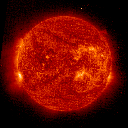
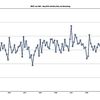
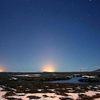
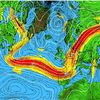
Athugasemdir
Árni Finsson skrifar í Morgunblaðið 16.sept.s.l. um nauðsyn minnkunar útstreymis gróðushúsalofttegunda :
" Þetta er ákaflega bagalegt því Ísland hefur formlega lýst yfir stuðningi við þau meginmarkmið lofstlagsstefnu Evrópusambandsins að draga skuli úr útstreymi um 25-40 % fyrir árið 2020 og að hitnun jarðar verði haldið innan 2 °C að meðaltali. Stuðningur Íslands við þessi markmið er enn án innihalds. "
Það er ekkert smávegis sem við höfum skrifað undir án þess að hafa verið spurðir. Hvað eigum við að gera Ágúst minn ef það nú kólnar frekar en hitnar ?
Halldór Jónsson, 21.9.2008 kl. 22:40
Kemur góður þá getið er. Í gær birtist óvænt sólblettur. Segulmynd gefur til kynna að hann tilheyri sólsveiflu #24.
Myndin í pistlinum er beintengd, þannig að hún breytist nokkrum sinnum á dag. Þar má því sjá sólblettinn.
Ágúst H Bjarnason, 22.9.2008 kl. 13:54
Af vefsíðunni www.solarcycle24.com
New Cycle 24 Sunspot grows !
09/22/2008 by Kevin VE3EN at 13:00
A new region with Cycle 24 magnetism formed Sunday night and has actually grown into a mini sunspot cluster.This is the first Cycle 24 sunspot in some time. There is no chance for solar flares from this region however.
Magnetogram Image (Sept 22)
Ágúst H Bjarnason, 22.9.2008 kl. 13:55
Vonandi fréttir Árni fljótt af þessum nýja sólbletti og getur tekið í taumana fyrir okkar hönd til þess að það hlýni nú ekki heimurinn. Svo er strókurinn afturúr þotu Al Gore góður til að skyggja á sólgeislunina. Manstu þegar Eðvarð Teller bauð umhverfissinnum þeirra daga uppá að kæla duglega fyrir þá jörðina með einni kolefnisbombu í háloftunum. Kannske að Árni og Gore fari að velta slíkum möguleikum fyrir sér úr því þeir ætla að stýra hitastiginu með yfirlýstum og umsömdum hætti
Halldór Jónsson, 22.9.2008 kl. 23:48
Halldór. Eru þetta fyrstu merki um sólsveiflu 24? Ekki gott að segja. Á solarcycle24.com segir
"The new Cycle sunspot that I first reported Sunday night has grown into a nice Sunspot cluster during the day Monday. Towards the later part of today it had lost some of its flux region, however Sunspot 1002 remains a small sized spot cluster. This is the first real decent sign of Cycle 24. Pending further growth, it could have a chance for C-Class flares. This region was classified today as an eight-spot Dso Beta group with new Cycle 24 polarity.
The big question is now... when will the next Cycle 24 show itself? "
Varðandi Teller, þá er Lesbókargreinin frá 1998 hér.
Þar stendur:
"Mynd 14. Ódýr sólgleraugu á jörðu eða Kyoto?
Nú þegar menn hafa áttað sig á því að trúlega hefur blessuð sólin verið að stríða okkur eru menn farnir að brosa út í annað og gera grín að öllu saman. Ef hækkun hitastigs um minna en 1°C er svona óskaplega hættuleg lífi á jörðu, verðum við að bregðast við því á einhvern hátt. Þetta er þó alls ekkert grín, heldur dauðans alvara.
Dr. Teller hefur komið fram með snjalla lausn á "vandamálinu" sem hermilíkön IPCC hafa spáð fyrir um. Hann bendir á að koma megi fyrir sólskermi úr smáögnum í lofthjúpnum og draga þannig agnarlítið, en nægilega, úr geislum sólar. Þetta er sama fyrirbæri og við verðum vör við eftir eldgos (t.d. Pinatubo 1992), og því ekkert ónáttúrulegt. Dr. Teller hefur slegið á kostnaðinn við slíkar aðgerðir og fengið út 100 til 1000 miljón bandaríkjadala á ári, sem er þó aðeins 0,1 til 1% af kostnaði Bandaríkjamanna einna við fyrsta áfanga aðgerða skv. Kyoto.
En, hvaða áhrif hefði þetta á líf okkar Íslendinga? Ef við lækkum hitastigið um hálfa gráðu, þá verður sama ástand hjá okkur og á síðustu öld þegar þúsundir Íslendinga urðu að flýja land vegna kulda. Hvort viljum við hafa hafís og óáran, eða sæmilega gott veður eins og nú, eða ennþá betra veður eins og Snorri Sturluson og Ari fróði nutu? Ættum við nokkrar bókmenntir frá söguöld ef hér hefði ríkt kuldi og óáran á þeim tíma?
Þið sem viljið lækka hitastigið, - vinsamlegast réttið upp hönd! Tæknin er til! Aftur til litlu ísaldar!"
Ágúst H Bjarnason, 23.9.2008 kl. 06:49
Nú er liðinn rúmlega áratugur síðan greinin í Lesbókinni var skrifuð. Þá höfðu menn miklar áhyggjur af hnatthlýnun. Nú væri fróðlegt að líta til baka. Hvernig hefur hitastig lofthjúps jarðar þróast á þessum áratug?
Toppurinn mikli var einmitt árið 1998. Hefur hlýnað síðan þá? Mælingar skrökva ekki.
Myndin er frá vefsíðunni www.climate4you.com . Prófessor Ole Humlum á vefsíðuna.
Ágúst H Bjarnason, 23.9.2008 kl. 07:37
Nú að kvöldi 23. sept. er sólbletturinn horfinn
Ágúst H Bjarnason, 23.9.2008 kl. 22:00
Sólbletturinn var skammlífur. Var horfinn eftir rúman sólarhring.
Ágúst H Bjarnason, 24.9.2008 kl. 08:35
Heldurðu að Áni hafi ekki bara tekið hann ?
Halldór Jónsson, 25.9.2008 kl. 23:13
Bæta við athugasemd [Innskráning]
Ekki er lengur hægt að skrifa athugasemdir við færsluna, þar sem tímamörk á athugasemdir eru liðin.